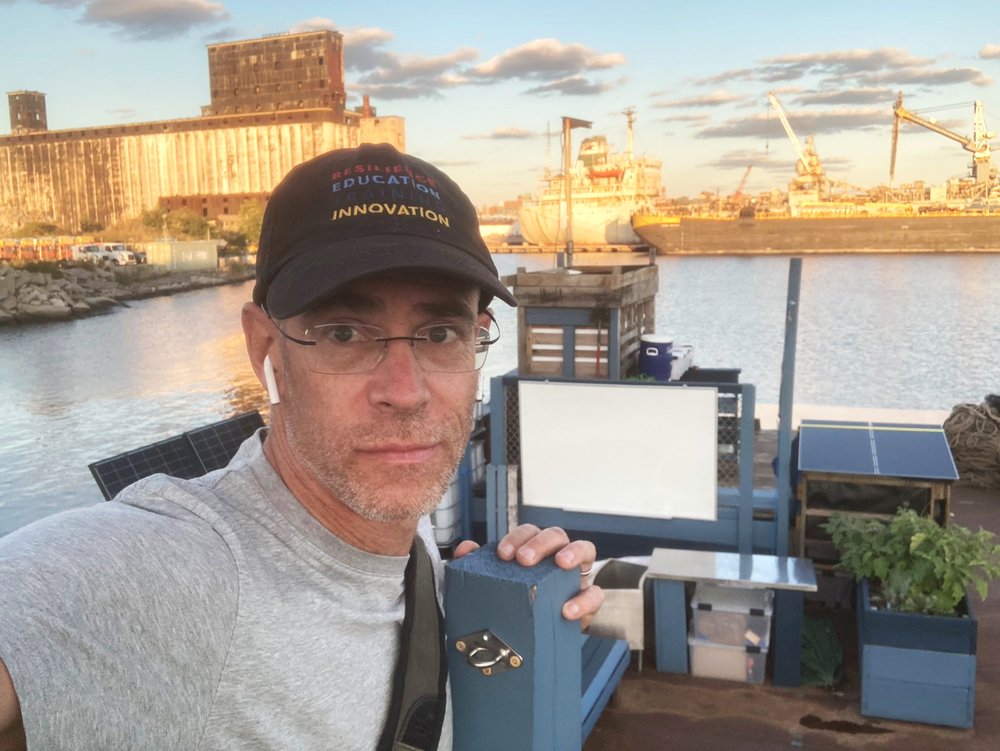City of Water Day: Special Highlights
Interview with Tim Gelman-Sevcik, Executive Director of the RETI Center


EAGLE: Let’s begin with a simple concept: your floating gardens are good, tell us about them and their environmental benefits.
GELMAN-SEVCIK: RETI (Resilience Education Training Innovation) was started after Superstorm Sandy basically to model different ways that the community can get involved in learning how to adapt to our changing climate. One of the things we do, activities we do, is build floating gardens. And the reason we build floating gardens is because of New York City’s 520 miles of coastline, more than half of it is what we see here, which is completely unnatural, made of bulkhead, which is concrete, sheet piling, which is steel, rip rap, which are rocks that resist the growth of marine species. So, that all replaced, to a large degree, marshland. So what we’re doing with our floating gardens is putting the marsh grasses back in place in the water.